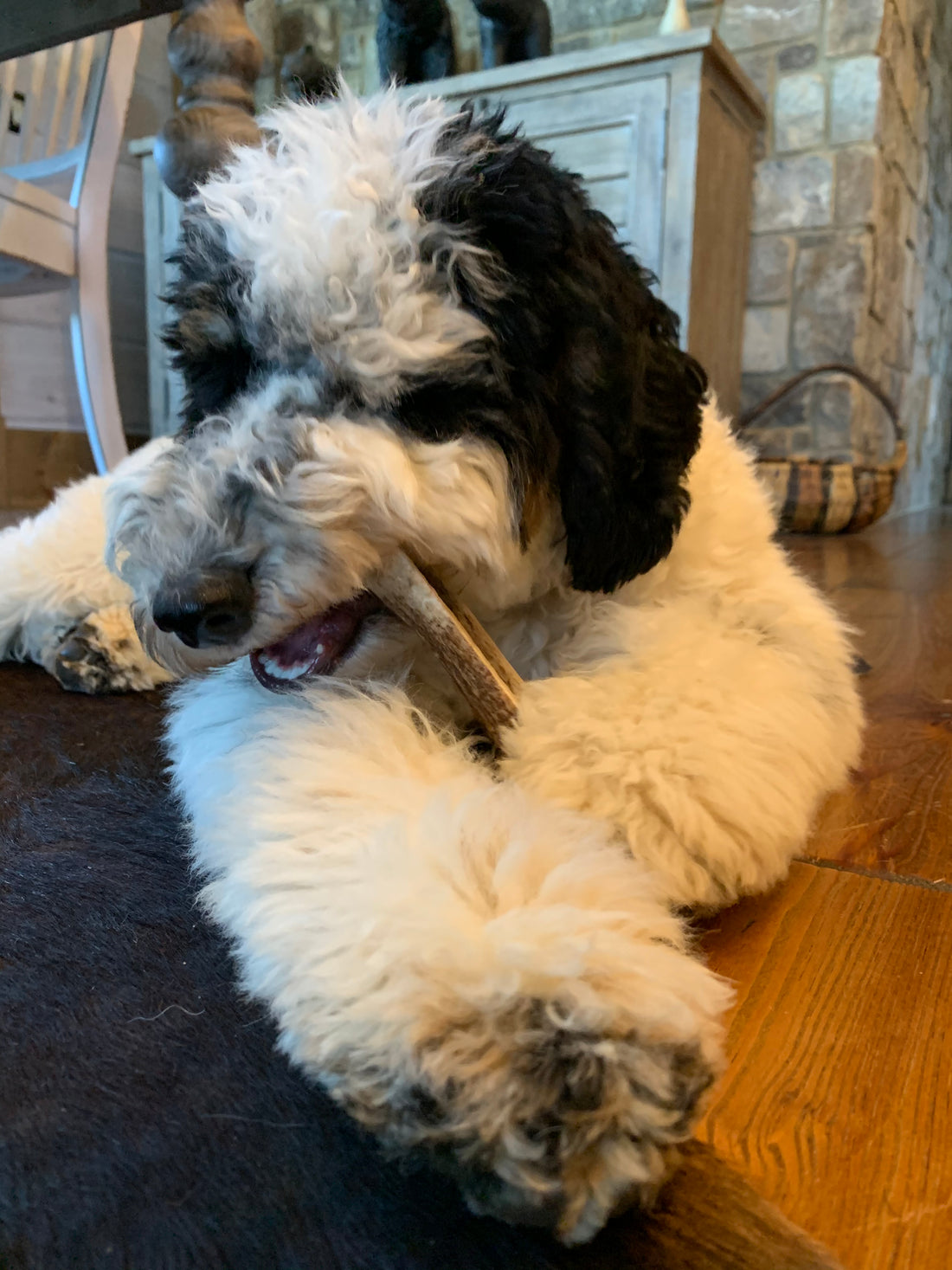Puppies, with their boundless energy and teething tendencies, are known for their enthusiastic chewing behavior. As a responsible dog owner, it's important to provide appropriate chew toys to satisfy their natural instincts and promote healthy oral development. Antlers have gained popularity as a durable and long-lasting chewing option for dogs. However, determining the right age at which puppies can safely chew antlers is crucial to prevent any potential risks. In this blog post, we will explore the factors to consider and provide guidelines to ensure the safe introduction of antlers for your growing puppy.
Factors to Consider
When determining the age at which puppies can safely chew antlers, it's important to consider the following factors:
-
Teething stage: Puppies typically go through a teething stage that starts around 3 to 4 months of age and can last up to 6 months or longer. During this period, their baby teeth fall out, and permanent teeth begin to come in. It's important to introduce appropriate chew toys to soothe their discomfort and help facilitate the teething process.
-
Size and breed: The size and breed of your puppy can influence when they are ready to chew antlers. Larger breed puppies tend to have stronger jaws and may be able to handle antlers at an earlier age compared to smaller breeds. Additionally, the size of the antler should be proportionate to your puppy's mouth and chewing strength to minimize any potential risks.
-
Dental development: Puppies' dental development varies, and their teeth may not be fully developed until around 6 to 8 months of age. It's crucial to ensure that their teeth and jaw structures are strong enough to withstand the chewing forces exerted on antlers.
Safe Introduction of Antlers
-
Consult your veterinarian: Before introducing antlers or any new chew toy, it's important to consult with your veterinarian. They can assess your puppy's dental development and provide personalized recommendations based on their breed, size, and individual characteristics.
-
Start with softer options: In the early stages of teething, it's advisable to begin with softer chew toys, such as rubber or fabric toys specifically designed for puppies. These toys provide relief to their sore gums and are less likely to cause tooth damage. Moose antlers can also be a great starting antler since they tend to be the softest between moose, deer, and elk antlers.
-
Monitor your puppy's chewing behavior: As your puppy progresses through the teething stage and their permanent teeth start to emerge, you can gradually introduce antlers under close supervision. Watch for any signs of discomfort, excessive forceful chewing, or tooth damage. If you notice any issues, discontinue the use of antlers and consult your veterinarian.
-
Choose appropriately sized antlers: Select antlers that are appropriate for your puppy's size and chewing strength. Avoid antlers that are too small, as they can become choking hazards, or too hard, as they may risk tooth fractures. Look for antlers specifically marketed for puppies or softer antler options.
-
Rotate chew toys: It's important to provide a variety of chew toys to prevent monotony and promote healthy chewing habits. Rotate between antlers, rubber toys, dental chews, and other safe options to keep your puppy engaged and satisfied.
The age at which puppies can safely chew antlers varies depending on factors such as teething stage, size, breed, and dental development. As a responsible dog owner, it's crucial to consider these factors and introduce antlers at the appropriate time to minimize any potential risks. Remember to consult with your veterinarian, closely monitor your puppy's chewing behavior, and choose appropriately sized antlers to ensure a safe and enjoyable chewing experience. With proper guidance and supervision, antlers can be a durable and beneficial option for your growing puppy's chewing needs.

